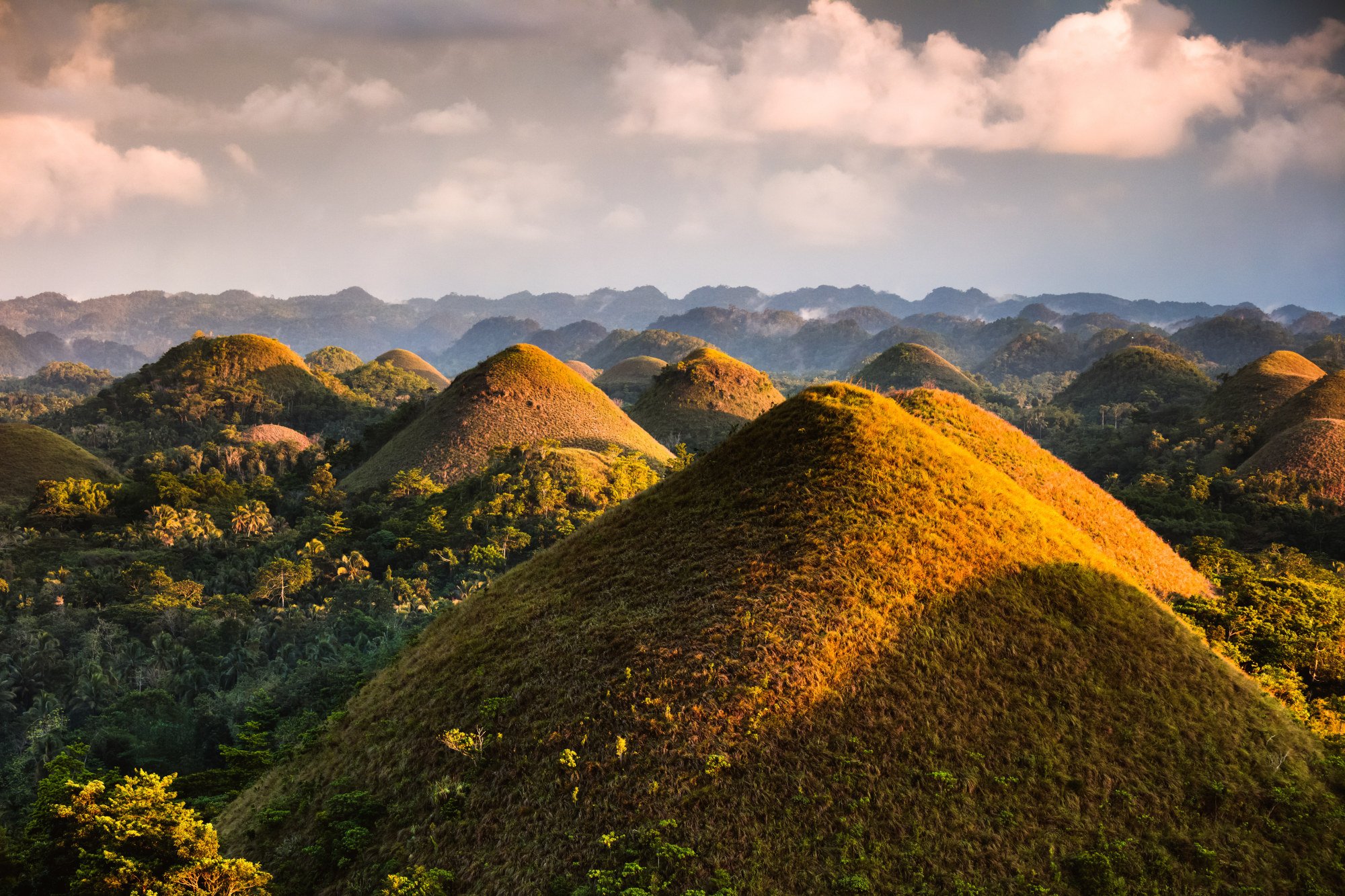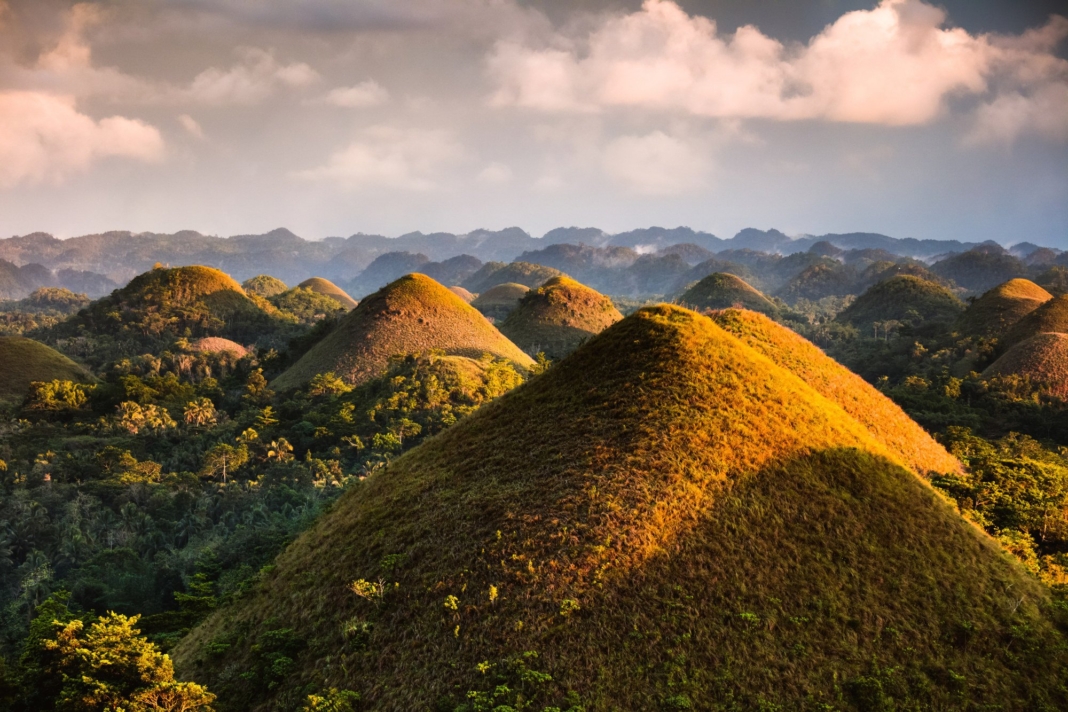In the dry season, the grass-covered hills turn chocolate brown, accounting for its name Chocolate Hills.

Unesco, which has placed the Chocolate Hills Natural Monument on its tentative list of World Heritage sites, noted that the formations ranging from 100 to 500 metres above sea level were similar to those found in Java, Indonesia but “more aesthetically extensive”.
Unesco last year declared the entire island of Bohol as the Philippines’ first Unesco Global Geopark for its “unique geological treasures” found in Chocolate Hills and in karstic geosites like caves and sinkholes. Bohol joins 194 other Unesco geoparks located across 48 countries.
Lody Padilla, a community development worker who worked in Bohol for five years to help residents develop livelihood projects in eco-tourism sites such as weaving and honing musical talents, slammed the images carved onto the hillside as “bastardising and destroying its very essence” of Chocolate Hills.
Captain’s Peak Resort owner Edgar Buton had told local media he had obtained all the necessary government permits, except for the Environment Compliance (ECC) Certificate from the Department of Environment and Natural Resources (DENR).
Philippine lawmaker hopes to turn South China Sea islands into tourism hotspot
Philippine lawmaker hopes to turn South China Sea islands into tourism hotspot
But he added that the DENR’s Protected Area Management Board (PAMB) overseeing Chocolate Hills had approved his business project in 2018.
“It is important to clarify that our resort’s construction plans underwent rigorous scrutiny and received the necessary approvals from relevant authorities … We have complied with all environmental regulations and have taken measures to minimise the ecological footprint throughout the development process,” the resort said in a statement on Wednesday.
This Week in Asia tried to contact Buton on Friday but received no reply by the time of publication. Paquito Malicor, DENR executive director of the Bohol region, said on Thursday that PAMB, which he chairs, had ordered the resort “temporarily closed” because it did not have a compliance certificate.
When Senator Raffy Tulfo grilled him on TV later the same day, Malicor refused to explain why his unit had allowed Captain’s Peak to operate without an ECC, claiming “higher-ups” told him to be tight-lipped.
Jamie Villamor, chair of the environment committee of Bohol province, also questioned by Tulfo on the same show, pointed out that the committee had, as early as July last year, officially requested Malicor to shut down Captain’s Peak, but PAMB never replied.
Villamor explained that PAMB under the chairmanship of Milacor had issued a guideline that effectively allowed Captain’s Peak and other similar resorts to build inside Chocolate Hills.
She said Milacor and PAMB were using a legal loophole that had reclassified part of the land as open to private ownership and for “mixed use” development.fore Ramos had issued the proclamation.
Villamor said PAMB had allowed development and construction inside Chocolate Hills “for as long as [the height] is within the 20 per cent threshold from the baseline to the tip of the hill”. But the provincial government and her committee objected to that guideline for being subjective.
The issue was urgent because more applicants have “lined up” to obtain PAMB’s approval to build more resorts in Chocolate Hills, she added.
The provincial board said on Friday it was investigating another resort that claimed to have ECC and PAMB clearances, which had hammered a winding wooden stairway up a hillside and onto a large viewing hilltop deck.
How Indonesians beat mining companies to help create a Unesco Global Geopark
How Indonesians beat mining companies to help create a Unesco Global Geopark
Unclear guidelines on protecting the country’s national treasures have long dogged eco-tourism projects.
In 2007, public uproar ended the construction of a 72-million-peso spa resort on the country’s most active volcano, Taal. Vilma Santos, then-governor of Batangas, said she had approved the construction because “people will be given jobs and the economy will improve”.
But she later admitted she had misgivings, and stopped the project because “we are talking of constructing something on a [protected area considered to be a] national treasure”.
Just like in Chocolate Hills, commercial construction became possible on Taal because areas there were opened up to private ownership.
Both chambers of Congress separately said on Friday they would investigate the issue, with lawmakers filing a resolution for a probe and Senator Tulfo also promising further investigation.
Source: scmp.com




